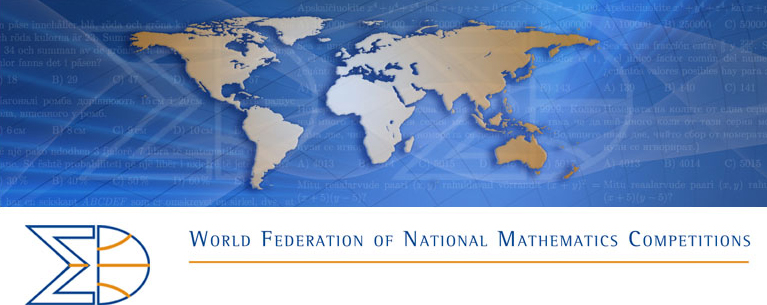![[Konstantinov]](obitkonstantinov.jpg)
Konstantinov with his two great colleagues, Alexei Sossinsky (left) and Kolya Vassiliev (centre) in Moscow 1994.
Nikolay Nikolayevich Konstantinov
Born Moscow 02 January 1932
Died Moscow 03 July 2021
Nikolay's life is most completely documented in a Wikipedia page
at here, where he is noted as a leading
Soviet and Russian mathematics educator.
From Peter Taylor
The Australian Mathematics competition (AMC) dates back to 1976 and Australia's involvement in the International Olympiad
started in 1981 although preparations for the latter had started in 1979. By 1988 the two events, run out of the same
office under the direction of Peter O'Halloran, had developed a good amount of administration infrastructure.
I had mainly been involved with the AMC and in 1988 Canberra was to host the IMO at the same time as ICME-6 was to be
held in Budapest. Peter had to stay in Canberra, but it was decided I would miss the hosting and attend ICME to ensure
our organisation was represented there. The Tournament of Towns, under the leadership of Nikolay Konstantinov in Moscow
was functioning in most of the Soviet bloc countries. Australia was apparently considered the
best chance to extend the Tournament of Towns to the West. As a result, Jordan Tabov and Petar Kenderov, of Sofia, Bulgaria,
took on the job of seeking me out to see what I could do. I should say that as a result of this I developed a
lifelong friendship with Jordan and Petar, including co-authoring 3 books on problem solving with Jordan.
On returning to Canberra I discussed this with Mike Newman and Laci Kovacs of the Australian National University, who had
been running mathematics enrichment classes for local talented students on Friday evenings and the Tournament of Towns seemed
an ideal focus. As a result Mike did stay on but immediately my colleague Malcolm Brooks and I took over the main running,
and amazingly Canberra was the first Western town to participate later in the same year, 1988, and performed quite well.
In future years many other Western countries followed our lead. But to be successful in the longer term I had to get to know Nikolay
to develop arrangements. In 1990 I visited Moscow. I had enrolled in Russian 1 and Nikolay could not speak English but we discovered
that in each case our German was good enough, without being fluent, for communication. I told Nikolay that to be successful
we needed all the past papers and be able to publish them and solutions in English. He didn't have that but went to a filing cabinet and
gave me a complete past set in Russian. I could not find and colleagues to translate, but I discovered my Russian was good enough
for translation of mathematics. I had also developed a relationship with Andy Liu, who was impressed by the quality of the
problems and was to help us solve the problems which we had not solved.
While there I also attended the summer conference, held in Viitna, Estonia, and got to know Nikolay's two main colleagues,
Kolya Vassiliev (Chairman of the problems committee) and Alexei Sossinsky.
Following being in Moscow, Nikolay, Jordan and I attended the first WFNMC conference run by Ron Dunkley at Waterloo, where the three
of us gave the keynote paper Birth of the Tournament of Towns,
later published in Mathematics Competitions Vol 4 No 2, pp28-41.
Things developed quickly. I still remember my elation when I translated what was to be my favourite Tournament problem ever,
which I could not believe how brilliant it was.
"On the Island of Camelot live 13 grey, 15 brown and 17 crimson chameleons.
If two chameleons of different colours meet, they both simultaneously change colour to
the third colour (e.g. if a grey and brown chameleon meet each other they both change to
crimson). Is it possible that they will eventually all be the same colour?"
Composed by V.G. Ilichev.
It is typical of these problems, with emphasis on structural thinking, rather than calculation or specific knowledge
of advanced theorems.
![[Konstantinov]](obitkonstantinovhilbert.jpg)
Nikolay in 1992 attended ICME-7 in Quebec, and he was awarded the WFNMC Hilbert Prize. He is shown there above with his award,
and with colleagues, from left Alexander Soifer (USA), Nikolay, Mark Saul (USA), Peter O'Halloran (Australia),
Ed Barbeu (Canada), Marcin Kucszma (Poland), Kiril Bankov (Bulgaria).
I also visited Nikolay in Moscow in 1994, and he attended a number of ICMEs and WFNMC Conferences. He was a wonderful
man, very generous, and kept himself fit with speed walking.
Peter Taylor
Canberra
2024
|

